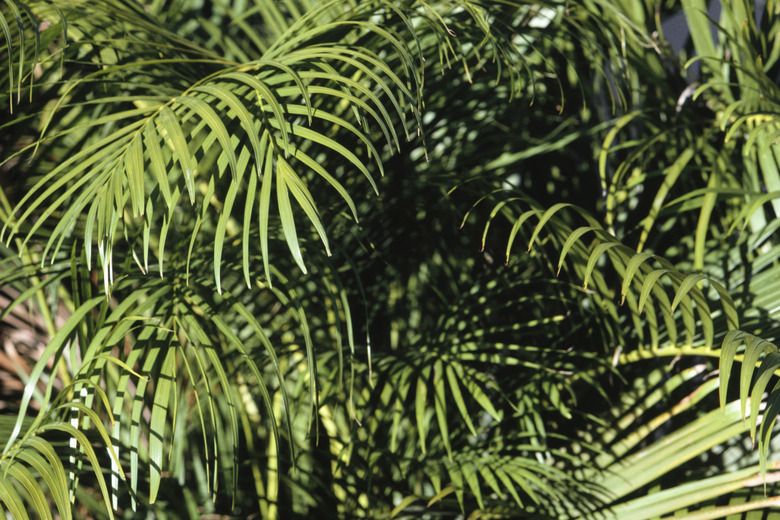What Palm Has Three Trunks?
Various species of palm can grow multiple trunks. They are often used in lush landscaping where they can provide a multidimensional focal point in the garden or be featured as specimen plant. Multiple trunks often mean additional maintenance and can be expensive to purchase in some nursery markets.
Various species of palm can grow multiple trunks. They are often used in lush landscaping where they can provide a multidimensional focal point in the garden or be featured as specimen plant. Multiple trunks often mean additional maintenance and can be expensive to purchase in some nursery markets.
Senegal Date Palm
The Senegal date palm (Phoenix reclinata) is hardy in U.S. Department of Agriculture zones 9b through 11. It is a true multi-trunked palm with older trunks growing nearly horizontal along the ground. The Senegal date palm is slow-growing, which makes large specimens particularly expensive. The fronds are pinnate, meaning they look like pairs of leaflets along a central support. This palm has long spines at the base of the fronds. It flowers and produces a small date that does not particularly attract wildlife. While often mistaken for the Pigmy date palm, the Senegal date palm is hardier and grows to a larger size.
- Various species of palm can grow multiple trunks.
- The Senegal date palm is slow-growing, which makes large specimens particularly expensive.
Pigmy Date Palm
Pigmy date palm (Phoenix roebelinii) is hardy in USDA zones 10a through 11. While the pigmy date palm is not truly a multi-trunked palm, it is often cultivated in a two- or three-trunk form for sale in nurseries. The pigmy date palm is sensitive to freezing. It should be wrapped to protect the trunk from freeze damage if cold temperatures are predicted to persist. Like the Senegal date palm, it flowers and makes a small date fruit and has pinnate leaflets. Pigmy date palm have long modified leaflets at the base of the leaf that are spines and can penetrate even thick work gloves.
European Fan Palm
Chamaerops humilis, or European fan palm, is a popular multi-trunked landscape palm. It is hardy in USDA zones 8b through 11, and tolerates mild winters well. European fan palm is a slow-growing palm with leaves that are palmate, meaning they spread out from a central point much like fingers. The petiole, or stem, of the frond has small spines that angle upward and can be dangerous when pruning. As it is slow-growing, it can command a high price in the nursery industry, often increasing with the number of trunks growing on the specimen. It is often confused with the windmill palm (Trachycarpus fortunei) which is hardy in zones 8a through 11. While the windmill palm is similar, it has no spines and is a single-trunked palm that can be clustered or manipulated to grow into multiple trunks.
- Pigmy date palm (Phoenix roebelinii) is hardy in USDA zones 10a through 11.
- European fan palm is a slow-growing palm with leaves that are palmate, meaning they spread out from a central point much like fingers.
Maintenance
Multi-trunked palms will try to grow additional trunks. These suckering growths should be removed and the area around the trunks kept clear. If the palm is a single-trunked tree planted in a group or cluster, the individual trunks should be supported and kept free of weeds.
